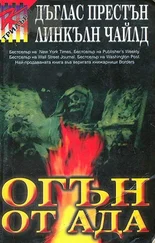As the press crowded in, the television cameras rising in the back like black insects, NBC and ABC and CNN and the rest of the alphabet soup, the print press along the front, and the digital jackasses just about everywhere, it looked like this was going to be a doozy. He was glad Singleton was leading off the briefing, but even so, D’Agosta began to sweat when he thought of his turn at the podium.
Minor arguments broke out as everyone jockeyed for the best seats. The room had been warm before the crowd arrived and it was fast heating up. In the wintertime, a crazy New York City regulation forbade them from turning on the A/C despite the fact that the ventilation in the room was abysmal.
As the sweep of the second hand on the big wall clock moved toward the hour, the mayor stepped to the podium. The television lights were on and the photographers crowded forward, elbowing each other and muttering expletives, the fluttering sound of their shutters like countless locust wings.
Mayor DeLillo gripped the sides of the podium with his big bony hands and gave the room a sweeping look of competence, resolve, and gravitas. He was a large man in every way — tall, broad, with a head of thick white hair, enormous hands, a jowly face, and large eyes glittering under bushy brows.
“Ladies and gentlemen of the press and the people of the great city of New York,” he boomed out in his legendary deep voice. “It is the policy of our police department to keep the community informed on matters of public interest. That is why we are here today. I can assure you that the entire resources of the city have been put in service of this investigation. And now Captain Singleton will speak to you about the particulars of the case.”
He yielded the podium. There was no shaking of hands; this was all serious business.
Singleton took his place at the podium, waiting for the sound level to drop toward a rustling silence.
“At two fourteen this morning,” he began, “East Hampton police responded to multiple alarms at a residence on Further Lane. They arrived to find seven bodies on the grounds and in the house of a large estate. These were the victims of a multiple homicide — six security guards and the owner of the estate, a Russian national by the name of Viktor Bogachyov. In addition, Mr. Bogachyov was found decapitated, the head gone.”
This occasioned a flurry of activity in the audience. Singleton plowed ahead. “The East Hampton police requested the assistance of the NYPD in determining whether this homicide was connected to the recent killing and decapitation of Mr. Marc Cantucci on the Upper East Side...”
Singleton droned on about the case in general terms, consulting a binder of notes that D’Agosta had put together for him. In contrast with the mayor, Singleton spoke in a monotonous, police-jargony deadpan voice — a just-the-facts-ma’am sort of tone — turning each page with a deliberate movement. He spoke for about ten minutes, outlining the bare facts of the three killings, starting with the latest and working back to the girl. As he reeled off information that almost everyone already knew, D’Agosta could feel the impatience of the crowd begin to rise. He knew his turn would be next.
Finally, Singleton halted. “I will now turn the briefing over to Lieutenant D’Agosta, Commander Detective Squad, who will speak more specifically and answer questions about the homicides, the possible connections among them, and some of the leads his team has been developing.”
He stepped away and D’Agosta took to the podium, trying to project the same gravitas that the mayor and Singleton had. He glanced over the assembled press, his eyes watering in the bright lights. He looked down at his notes, but they were a wavering mass of gray. He knew, from prior experience, that he was not very good at this. He had tried to tell Singleton as much and beg off, but the captain hadn’t been sympathetic. “Get out there and do it. If you want my advice, strive to be as boring as possible. Give them only the information you have to. And for God’s sake don’t let any of the bastards take control of the room. You’re the alpha male in there — don’t forget it.” This retrograde advice was delivered with a manly slap on the back.
And here he was. “Thank you, Captain Singleton. And thank you, Mayor DeLillo. The homicide division is following up on several promising investigative threads.” He allowed for a pause. “I wish I could go into detail, but most of what we have so far falls into the category of ‘non-releasable information,’ which the department defines as: One: Information posing an undue risk to the personal safety of members of the department, victims, or others. Two: Information that may interfere with police operations. And three: Information that adversely affects the rights of an accused or the investigation or prosecution of a crime.”
He paused and heard what sounded like a collective groan from the crowd. Well, Singleton had told him to be boring.
“Since you have most of the details of the first two homicides, I will focus on what we’ve learned so far about last night’s homicide in East Hampton.” D’Agosta went on, describing the third killing in much more detail than Singleton. He spoke of the six dead bodyguards, the discovery of the boat and other evidence, but he held back mention of the size thirteen foot — that crucial detail he wanted to keep in reserve. He spoke of Bogachyov’s many lawsuits and shady business dealings. It was alleged, for example, that Bogachyov had been brokering decommissioned nuclear equipment and missile parts through Chinese shell companies connected to the North Korean regime.
And then he returned to the crime, praising the fine work of the East Hampton Police Department — until a voice shouted out in interruption: “But are the killings connected ?”
D’Agosta halted, losing his place. Was that that son of a bitch Harriman? It sure sounded like him. After a moment of scanning his notes he went on, talking about his department’s work liaising with East Hampton, when the voice interrupted again.
“Connected, or not? Can we have an answer?”
It was that damn Harriman. D’Agosta looked up from his papers. “We are for the time being treating the three homicides as separate cases, but this doesn’t mean we don’t believe they may be connected.”
“Which means what?” Harriman shouted.
“It means we haven’t decided.”
“Three decapitations in a week — and you’re saying they’re not connected ? And this new murder — it’s just like the second, right?”
“The third homicide does bear some similarities to the second one, yes,” said D’Agosta.
“But not to the first murder? Is that what you’re saying?”
“We’re still looking into that...” D’Agosta suddenly realized he was allowing Harriman to do exactly what Singleton had warned him about: hijack the room. “I’d like to finish what I was saying earlier, please. According to East Hampton PD, the investigative threads include—”
“So you’re implying there are two murderers? The first who killed Grace Ozmian, and another murderer who did two and three? In other words, the first killing inspired a serial killer to commit the others? And it’s actually not just two and three — counting the dead guards you mentioned, it’s technically nine.”
This was going south fast. “Mr. Harriman, save your questions for the Q and A.”
But the discipline of the crowd was breaking down, and several other questions were being shouted at the podium. Singleton stepped forward, held up his hand, and the crowd shushed. D’Agosta felt his face flush.
“I think we’re ready for questions,” said Singleton, turning back to D’Agosta.
Читать дальше
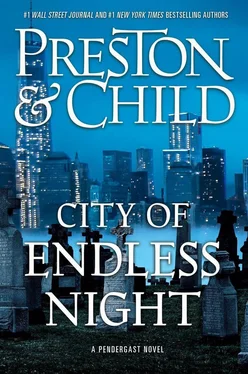
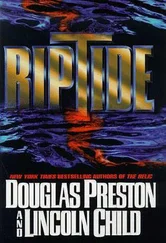

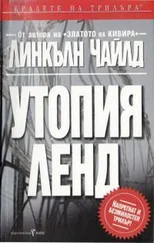

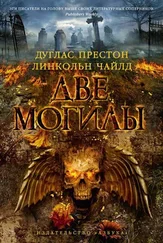



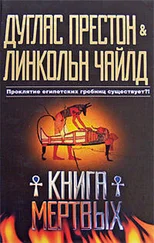
![Линкольн Чайлд - Стихи для мертвецов [litres]](/books/396536/linkoln-chajld-stihi-dlya-mertvecov-litres-thumb.webp)
